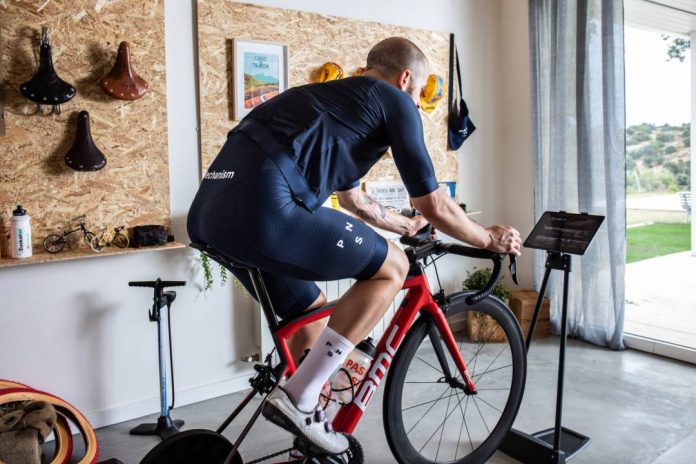These days, more athletes are trying polarized training: a methodology based on easy and hard intensities, avoiding medium/moderate paces.
There was a tendency to de-emphasize long, low-intensity workouts, and use them only for active recovery. Popular wisdom said they were less effective than a ride at a brisk pace.
But this clashes with the latest science. According to most studies, it’s best to mostly train at a gentle pace, with some days at a moderate pace and then, over time (especially for those athletes who have just started out), add higher intensity sessions.
Professional athletes train in this way, since it has been proven that the more you train, the more important it is to train gently, keeping moderate efforts to a minimum.
Polarized training, what is it?
The concept of polarized training combines light training with intense or “quality” training, thus severely reducing the amount of moderate training.
Polarized training involves dividing training sessions into two parts: low intensity workouts and high intensity workouts.
The optimal ratio advocated by polarized training experts is to train 80% in the gentle zone and 20% in the intense zone:
Easy intensity training should be below 80% of your maximum heart rate, – around 70-75% of the HRmax. This helps establish a good aerobic base, thus strengthening heart and lung performance, and improving fat burning.
The remaining 20% of your training should be done at a higher intensity, over 85% of HRmax. This really elevates the lactate system with some input from its most immediate energy system, the ATP-PC system (adenosine triphosphate and phosphocreatine system). This provides energy for 10-15 second efforts (such as finish line sprints).
Based on science, this is ideal. The downside is that many athletes, due to lack of time, feel they need to maximize each workout. So they train too much at around 80-85% of HRmax.
How do you implement polarized training?
It depends on how much time you have. If you’re working on your aerobic base and you have time to train, your sessions should be mostly at a gentle pace, but including some training at a moderate pace.
If, on the other hand, you have less time, it’s best to ride at a brisk pace regularly. From then on, intense training will be incorporated in a progressive manner.
For example, if you train 6 hours a week, you should spend 4 hours a week training at low intensity and 2 hours at high intensity.
What are the advantages?
Polarized training improves exercise economy, so you can ride faster with less effort. At the same time, the maximum oxygen volume is increased. Thus, it is considered a more effective type of training than between-threshold sessions.
Polarized training achieves better results in a shorter time. In addition, the fact that the maximum intensity is not always maintained in all workouts helps prevent injuries and discomfort.
Who is polarized training for?
Polarized training is aimed at athletes with at least 2 years of sporting experience. However, it can be very beneficial for both elite athletes and beginners.
This type of session is useful for those who are just starting out, as it avoids exercising at too fast a pace. The advantages of training at low intensity for a beginner are:
- Improves the aerobic system.
- Reduces the risk of injury.
- Avoids the risk of overtraining.
- Increases endurance, so you can increase mileage.
Based on several studies, applying the percentages of 80% and 20% has a number of benefits. So most professionals include this ratio in their training plans. Polarized training, yes or no? The answer depends on the time allocated to exercise and the priorities of each athlete.














This sounds very similar to the Maffetone’s method utilized in running. Some people will benefit from it while other will feel that it’s too constricting. Personally, I’m not convinced enough to engage in this type of training.